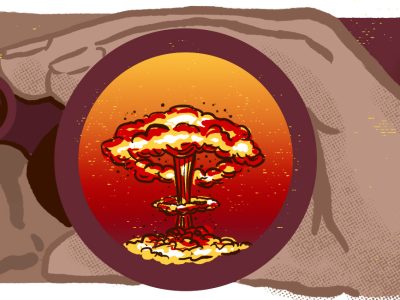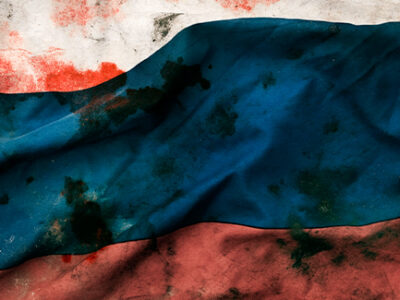In December 1989, land, sea and air forces of the United States enveloped the security forces of Panama like a starfish attacking a clam. Operation Just Cause became the prototype for U.S. military operational doctrine for taking down an undersized opponent. President George H.W. Bush not only got rid of the criminal drug-running regime of Panamanian President Manuel Noriega, the American commander-in-chief also demonstrated that U.S. forces, benefiting from his predecessor Ronald Reagan’s unprecedented peacetime buildup in military strength, were fully recovered from the after-effects of the Vietnam War and the neglect of the Carter administration. Two years later, American forces led a broad coalition to rapid victory over Iraq, whose military was the second best in the region, in Operation Desert Shield/Desert Storm. In the 1990s, American land, air and sea forces set the standard for modernization through digitization applied to combined force—coordinated land, sea and air—operations.
During the 1990s, Russian forces mirrored the chaos and disintegration that generally affected the rest of the nation in the immediate aftermath of the collapse of the Soviet Union. Operations in Chechnya demonstrated how inept the Russian military had become. The self-sinking of the submarine Kursk in August 2000 further symbolized the state to which the once formidable Russian military had devolved. When U.S.-led NATO forces intervened in Kosovo against Russia’s historic allies the Serbs, all Russia could do was protest. A further example of the sorry state of affairs was the selling of rides in advanced fighters like the MiG-29 for Americans who could afford the roughly thousand-buck-a-minute fare.
Then came August 8, 2008. Before dawn a Russian motorized tank division began rolling into South Ossetia. At sunrise an estimated 300 Russian military aircraft quickly gained air superiority over Georgia’s estimated eight Sukhoi-25 ground attack aircraft. Over the next 48 hours, elements of two assault divisions moved rapidly from their respective bases in the Leningrad and Moscow military districts. Reportedly, naval forces in the Black Sea quickly positioned themselves to block the Georgian port of Poti and may have conducted an amphibious operation along the coast.
With some minor losses, reported at four fighter-bombers and a TU-22M supersonic jet bomber roughly equivalent to the U.S. Air Force’s FB-111 swing-wing bombers (removed from the U.S. inventory during the Clinton years), Russian air forces bombed Georgian air and land bases as well as selective targets in Tbilisi and other major Georgian cities. Russian land forces then advanced into Georgia to cut the only highway traversing the country, effectively isolating the capital of Tbilisi.
Russian forces, in short, carried out a well-planned, well-coordinated take-down operation. The Pentagon, NATO and both presidential candidates in this election year had better pay attention because Russia demonstrated it can carry out a high-intensity and complex combined arms operation. The operational tempo reflects detailed planning and preparation.
Militarily, the U.S. response was to fly Air Force C-17 cargo planes loaded with humanitarian aid to Tbilisi, confident that absent some egregious SNAFU the Kremlin would not risk shooting one down.
What Russia did this past week or two is roughly analogous to U.S. operations in Panama almost 20 years ago. Politically and diplomatically, the Russians are telling the world they have the will and ability to act like a great power. Militarily, Russian forces demonstrated they can carry out a highly-complex combined forces operation.
U.S. armed forces, especially the Army, have been stretched thin by simultaneous operations in Iraq and Afghanistan. Seven years of operations on a force far too small and inadequately designed for a war of erosion have taken their toll. Not only must the United States rebuild its armed forces, we must modernize to meet the land, sea and air challenges that Russia can pose. Modernization will be expensive given the costs involved in sustaining the War on Terror. But the costs of not meeting this challenge could reach beyond anything imaginable.




